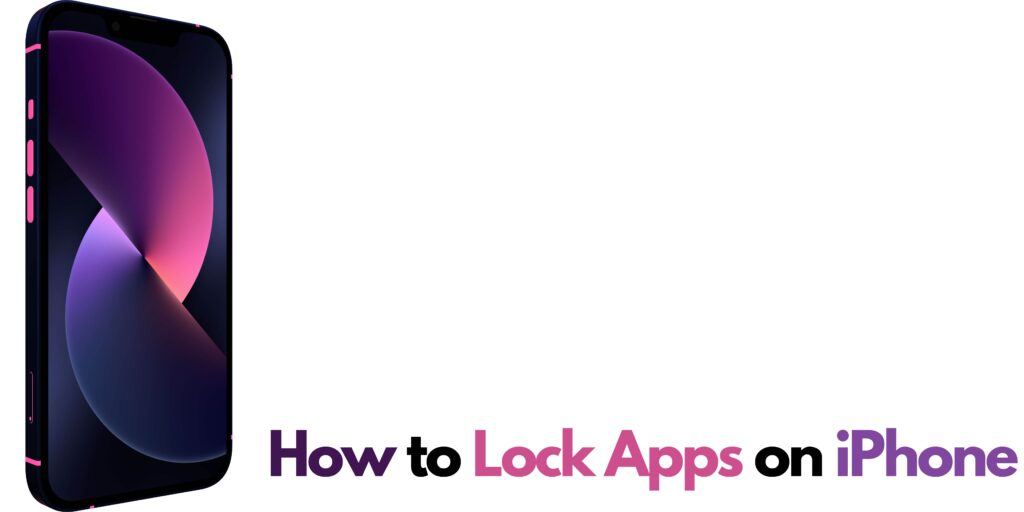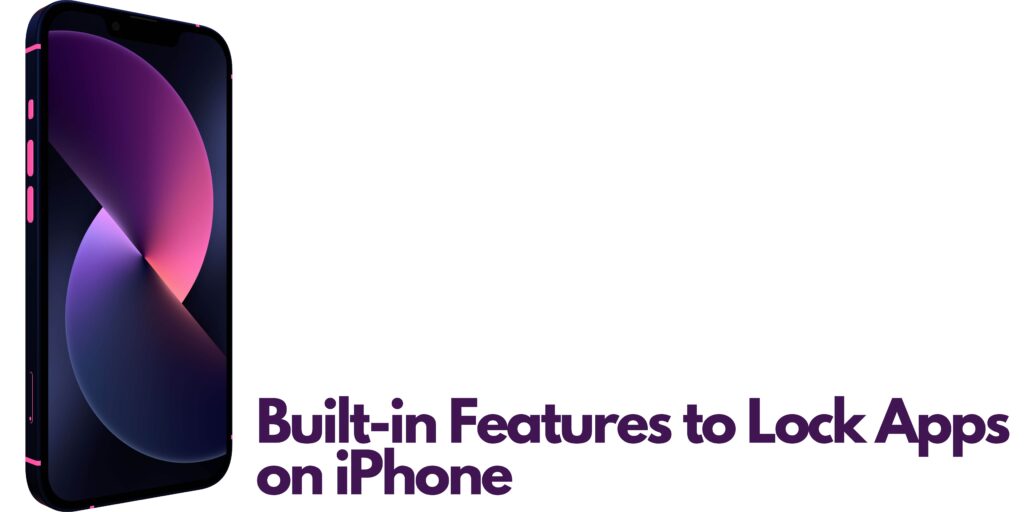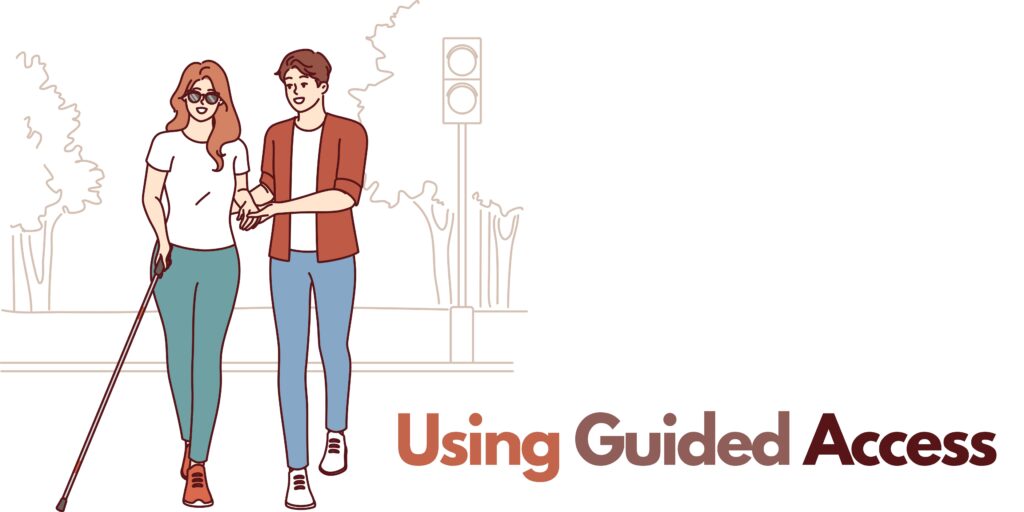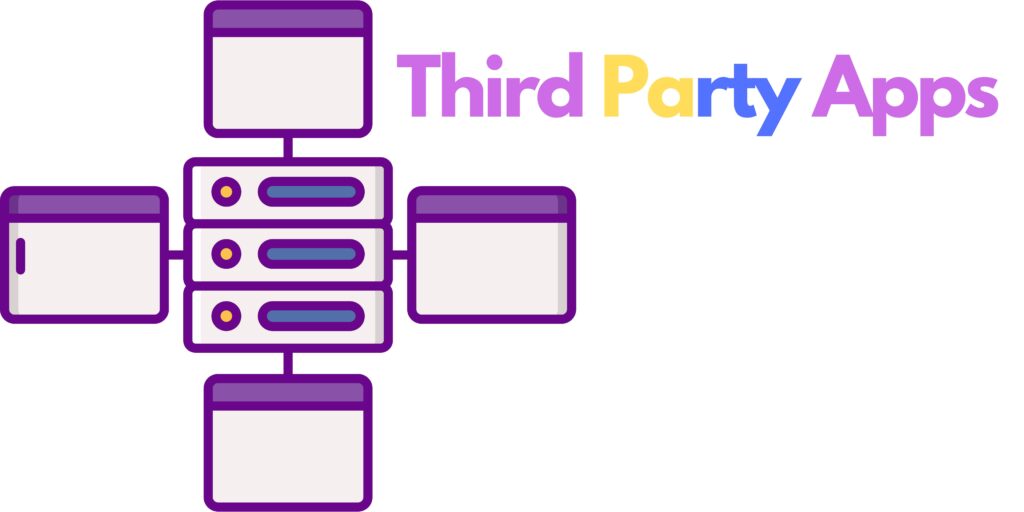
This is a digital era where privacy and security are the most significant concerns that need to be addressed. This has necessitated the “how to lock apps on iPhone“. You may want to restrict access to social media accounts, your bank’s app or personal files; App lock is a good solution for this problem. Fortunately, there are many ways you can do this through various methods as well as third-party applications. In this guide we will look into different approaches of securing applications in your iPhone with FAQs at the end.
Introduction:
When Lock Apps on your iPhone it means only you or those authorized are able to access sensitive information within certain applications or perform some functions. Whether you have a fear for self-content messages, financial details, private images among others, application locking offers more protection than the default device lock screen.
Built-in Features to Lock Apps on iPhone:

Face ID and Touch ID:
If you have an iPhone with Face ID or Touch ID feature, then these biometric authentication systems can be used as means of locking particular apps that gives entryway signals thus:
- Settings > Face ID & Passcode (or Touch ID & Passcode)
2. Enter your device passcode.
3. Toggle on “Require Face ID” or “Require Touch ID” under “Use Face ID for” or “Use Touch ID for.”
Once done so, the next time you open these apps, they will require you to use face id/ touch id which increases security.
App Restrictions with Screen Time:
Screen Time is an iOS feature that lets you limit access either by category or specific app; however it does not enable individual app blocking but aids in reducing overall usage and availability of certain types of content using following method:
- Settings > Screen Time > Turn on Screen Time
- Set a Screen Time passcode (if you haven’t already).
- Tap on “App Limits” and set time limits for either your application classes or specific applications.
Although this way of blocking will not give you the flexibility of locking individual apps, it is a helpful tool to manage screen time and limit access to inappropriate content.
Using Guided Access:

Guided access restricts your device usage to a single app only or is used with an intent of limiting areas on the screen that can be touched. However, Guided Access can also be used as an app lock for some time. Here’s how you go about it:
- Settings > Accessibility > Guided Access
- Toggle on Guided Access.
- Open the app you want to lock.
- Triple-click the side or home button (depending on your iPhone model) to start Guided Access.
- Tap on “Options” and personalize them including time limits and disable parts of the touch screen.
- Tap on “Start” so that a guided access mode begins in iOS devices.
To exit out from guided access mode; triple click side /home button again and put in your passcode when prompted, then select “end” at the top left corner.
Guided access isn’t designed for Lock Apps only, but it can be used temporarily restricting someone into one app only.
Third-party Apps for Lock Apps:

In case you are in need of more comprehensive and customizable app locking solutions, App Store has a number of third party apps. Some of these apps have features like fingerprint authentication, PIN protection and the ability to Lock Apps. Here are some popular options:
AppLocker:
AppLocker is an application that enables an individual to restrict entry into specified applications using password or face recognition scan by iOS device’s camera. This allows users to secure their personal information like credit card details and photos taken with their iDevice.
Lockdown:
Lockdown is a great alternative for those who seek for all-in-one solution instead of having too many different applications. With this app you can Lock Apps many applications at once to increase security level on your device.
BioProtect X:
To add another layer of defense in keeping away intruders from accessing your applications through providing a mechanism for the use bio-metrics while unlocking devices; iPhones are included here because they offer such support as pass codes; other types include Touch ID, Face ID etc.
Folder Lock:
Folder Lock does much more than just app locking: it also provides file encryption, cloud backup and secure browsing among others. Whether watching movies, transferring files or even facilitating workflow efficiency for people on the move; there’s nothing quite as versatile when it comes down mobile productivity tools – folder locker being one such example.
When looking to download and install a third-party app locker, it is important to check user reviews first, look into permissions asked by the program as well as confirmability of its developer.
FAQs (Frequently Asked Questions):
Can I lock individual apps on iPhone?
Yes! You can Lock Apps on iPhone either using default features like Face ID or Touch ID or otherwise taking advantage of third-party app lockers which could be found at App Store.
Are third-party app lockers safe to use?
While most 3rd party app lockers are completely safe and reliable there are some that should be avoided. In such cases it is necessary to check out user feedback, the publisher’s reputation and other factors.
Can I Lock Apps without downloading additional apps?
Yes! There is no need to download any extra applications as built-in features like Face ID, Touch ID or Screen Time will help you keep your app locked securely. Third-party Lock Apps may however offer more customization options compared to these in-built functionalities.
How secure are Face ID and Touch ID for Lock Apps?
Both Face ID and Touch ID provide very strong security mechanisms for preventing unauthorized access to your applications through biometrics. However, it is very important that you keep your device passcode confidential otherwise a person can override these two devices password.
Can I set time-based restrictions for app access?
Yes! You can definitely use iOS’s Screen Time feature which allows creating restricted periods when apps are either blocked completely or left reachable only during specific hours of the day.
What should I do if I forget the passcode or password for an Lock Apps?
If you lost the passcode or password used for accessing an application; then you need to reset it probably by removing its data or contacting developer of those apps individually but beware that factory resetting entails losing every piece of information stored within them along settings they have been adjusted at. A reactivation process might also assist towards regaining control over this particular communication tool as well if desire arises thus nothing significant would be achieved even having encountered such setback
Conclusion:
Ensuring that your iPhone apps are locked is important because it helps you to safeguard your confidential information and privacy. If you prefer using the built-in options like Face ID, Touch ID or third-party app lockers, these measures will help in securing your apps against any threats which may lead to personal data loss. Furthermore, by following the ways described in this guide along with tackling the frequently asked questions and some concerns